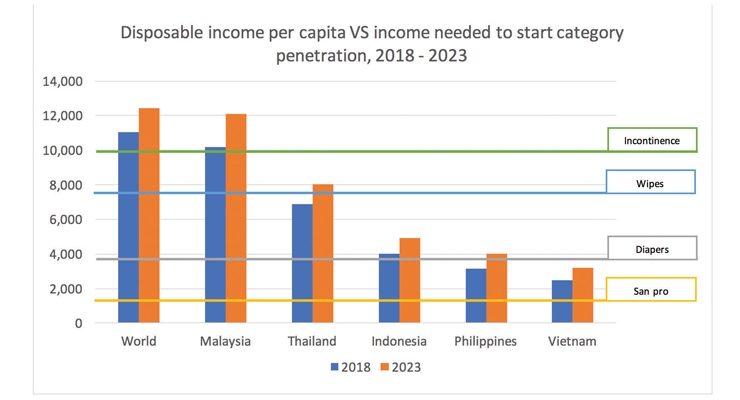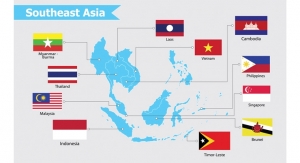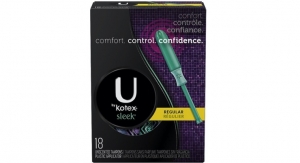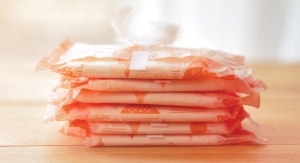Gilbert Lai, Euromonitor International03.04.19
Southeast Asia is one of the fastest growing regions globally, with thriving consumer demand for daily necessities due to improving living standards. In value terms, the Southeast Asia market is expected to grow at twice the rate of the global market to 2023. This is largely driven by macroeconomic factors such as income growth, urbanization, and increasing literacy levels. With rapid economic development and rising education levels, consumers in developing Southeast Asian countries have greater purchasing power and health awareness to incorporate modern disposable hygiene products into their daily lives.
Moreover, the female population in Southeast Asia is more educated than ever before, leading also to an increase in the number of women entering the workforce and higher disposable incomes. Education and financial empowerment further support not only the need for modern, convenient hygiene products for themselves and their babies, but also afford women the purchasing power to buy these products. By 2023, the average disposable income per capita for the female population in Southeast Asia is expected to increase by more than $1200, which is twice the amount of the global female population.
More Southeast Asian Parents can Afford Disposable Hygiene for their Babies
The per capita disposable income threshold for parents to enter the disposable nappies/diapers/pants category is around $4000. While the majority of adults in Southeast Asia, except for Singapore and Malaysia, still fall below this level in 2018, there are more adults crossing that threshold, especially in countries such as Indonesia, the Philippines and Malaysia. The main drivers for disposable nappies growth include high population growth rates; an increasing number of dual-income families, and hygiene awareness among parents as the growing middle-class is becoming increasingly conscious of baby hygiene. With more dual-income families where both parents are engaged in full-time employment, there is a shift in how parents approach baby-related chores and education, seen in the rise in the average age of potty training as parents lack the time to educate and become more reliant on convenient alternatives.
Another notable trend in Southeast Asia is that consumers are increasingly turning to disposable pants. It has become the most popular format in markets like Indonesia, Thailand and Vietnam. The convenience offered by pants is a major factor underpinning this switch, as parents continue to look for products that provide their children with more comfort, protection, and greater freedom of movement. In addition, demographic shifts in Southeast Asia through 2027 indicate growth in the 1-4-year-old age group, versus a decline in newborns, creating more opportunities in pants for older children. However, affordability of pants remains crucial to driving wider product adoption among vast lower income consumer groups.
Subsequently, there are opportunities for manufacturers at both ends of the price spectrum – from affordable products to entice consumers to enter the disposable nappies/diapers/pants category, to innovation along value-added lines with specific features that consumers in middle- and upper-income segments are willing to spend on. To design successful value-added premium products, it is important to recognize consumer preferences and influential product features consumers are willing to pay for in each market. In most cases, claims of being a premium brand alone are not sufficient. For example, Euromonitor International’s global consumer surveys indicate that consumers in Thailand show a strong preference for high-quality baby care products, which however does not equate to a preference for premium/luxury brands. On the other hand, Indonesians are leaning towards products that are convenient to use and certified as safe for children by a government or non-profit organization. Positioning products correctly in each market can secure a share of sales and growth.
Brand loyalty can be strong when it comes to baby products, where parents tend to opt for products with an established brand name and known quality as well as specific provenance. For example, Kao Corp.’s Merries brand makes use of its “Number 1 in Japan” claim to target mid- to high-income consumers in the region. The “Made in Japan” label acts as a quality assurance, especially among the Southeast Asian consumers who associate Japanese products with quality and safety.
To succeed in the various markets within Southeast Asia, where usage of products is yet to reach its full potential, it is imperative that manufacturers build emotional relationships and trust with parents. The introduction of products at hospitals, being the first touch point, is an effective method to increase the usage rate of these products. Additionally, in pant format, companies are focusing on educating consumers about product uses and benefits, thereby raising product awareness and understanding.
Changing Lifestyles Support Diverse Needs for Modern Femcare Products
As mentioned previously, education levels and disposable incomes have been increasing for women in the developing markets of the region, leading to a more empowered modern woman with more focus on self-care. As a result, growth of sanitary protection products in Southeast Asia has soared in recent years with female consumers placing high importance on hygiene in their daily lives and subsequently more frequent use of sanitary protection products.
At the same time, key strategy for growth in the region’s developed markets also involves tapping into lifestyle changes and trends. For instance, in Singapore women are increasingly looking for sanitary protection products featuring organic and sustainable raw materials which are perceived to be safer and better for skin.
Although towels stood out as the primary sanitary protection product in the region, it is worth noting that panty liners experience growth across most markets in the region. The demand for such products is derived from women who do not experience heavy flow and want to save money as unit prices of pantyliners are cheaper than other sanitary protection products. Moreover, many working women, especially among middle and upper classes, prefer to use pantyliners daily for freshness and comfort.
On the other hand, tampons remain niche in the region. This is largely attributed to lack of familiarity with the product, high prices and a lack of marketing. They attract a small segment of women who are acquainted with Western culture or lead active lifestyles, such as swimming and other water activities.
The competitive landscape in Southeast Asia’s sanitary protection market is largely dominated by multinational companies - Unicharm Corp., Kao Corp., Johnson & Johnson, Kimberly-Clark, Procter & Gamble, and Essity, which together account for the lion’s share of retail value sales in sanitary protection. This indicates high consumer preference for purchasing from well-known brands, which are associated with quality and safety. Innovation also further stimulates demand and brand sales. New products seen in the region include organic cotton towels for sensitive skin (by Sofy, Unicharm) as well as new technologies to improve stretch and comfort to minimize the risk of leakage (by Kotex, Kimberly-Clark).
As Southeast Asian countries continue to record economic growth and changing lifestyles, coupled with significant unmet potential in developing markets, international and domestic companies can further explore opportunities for long-term growth potential in the region.
Moreover, the female population in Southeast Asia is more educated than ever before, leading also to an increase in the number of women entering the workforce and higher disposable incomes. Education and financial empowerment further support not only the need for modern, convenient hygiene products for themselves and their babies, but also afford women the purchasing power to buy these products. By 2023, the average disposable income per capita for the female population in Southeast Asia is expected to increase by more than $1200, which is twice the amount of the global female population.
More Southeast Asian Parents can Afford Disposable Hygiene for their Babies
The per capita disposable income threshold for parents to enter the disposable nappies/diapers/pants category is around $4000. While the majority of adults in Southeast Asia, except for Singapore and Malaysia, still fall below this level in 2018, there are more adults crossing that threshold, especially in countries such as Indonesia, the Philippines and Malaysia. The main drivers for disposable nappies growth include high population growth rates; an increasing number of dual-income families, and hygiene awareness among parents as the growing middle-class is becoming increasingly conscious of baby hygiene. With more dual-income families where both parents are engaged in full-time employment, there is a shift in how parents approach baby-related chores and education, seen in the rise in the average age of potty training as parents lack the time to educate and become more reliant on convenient alternatives.
Another notable trend in Southeast Asia is that consumers are increasingly turning to disposable pants. It has become the most popular format in markets like Indonesia, Thailand and Vietnam. The convenience offered by pants is a major factor underpinning this switch, as parents continue to look for products that provide their children with more comfort, protection, and greater freedom of movement. In addition, demographic shifts in Southeast Asia through 2027 indicate growth in the 1-4-year-old age group, versus a decline in newborns, creating more opportunities in pants for older children. However, affordability of pants remains crucial to driving wider product adoption among vast lower income consumer groups.
Subsequently, there are opportunities for manufacturers at both ends of the price spectrum – from affordable products to entice consumers to enter the disposable nappies/diapers/pants category, to innovation along value-added lines with specific features that consumers in middle- and upper-income segments are willing to spend on. To design successful value-added premium products, it is important to recognize consumer preferences and influential product features consumers are willing to pay for in each market. In most cases, claims of being a premium brand alone are not sufficient. For example, Euromonitor International’s global consumer surveys indicate that consumers in Thailand show a strong preference for high-quality baby care products, which however does not equate to a preference for premium/luxury brands. On the other hand, Indonesians are leaning towards products that are convenient to use and certified as safe for children by a government or non-profit organization. Positioning products correctly in each market can secure a share of sales and growth.
Brand loyalty can be strong when it comes to baby products, where parents tend to opt for products with an established brand name and known quality as well as specific provenance. For example, Kao Corp.’s Merries brand makes use of its “Number 1 in Japan” claim to target mid- to high-income consumers in the region. The “Made in Japan” label acts as a quality assurance, especially among the Southeast Asian consumers who associate Japanese products with quality and safety.
To succeed in the various markets within Southeast Asia, where usage of products is yet to reach its full potential, it is imperative that manufacturers build emotional relationships and trust with parents. The introduction of products at hospitals, being the first touch point, is an effective method to increase the usage rate of these products. Additionally, in pant format, companies are focusing on educating consumers about product uses and benefits, thereby raising product awareness and understanding.
Changing Lifestyles Support Diverse Needs for Modern Femcare Products
As mentioned previously, education levels and disposable incomes have been increasing for women in the developing markets of the region, leading to a more empowered modern woman with more focus on self-care. As a result, growth of sanitary protection products in Southeast Asia has soared in recent years with female consumers placing high importance on hygiene in their daily lives and subsequently more frequent use of sanitary protection products.
At the same time, key strategy for growth in the region’s developed markets also involves tapping into lifestyle changes and trends. For instance, in Singapore women are increasingly looking for sanitary protection products featuring organic and sustainable raw materials which are perceived to be safer and better for skin.
Although towels stood out as the primary sanitary protection product in the region, it is worth noting that panty liners experience growth across most markets in the region. The demand for such products is derived from women who do not experience heavy flow and want to save money as unit prices of pantyliners are cheaper than other sanitary protection products. Moreover, many working women, especially among middle and upper classes, prefer to use pantyliners daily for freshness and comfort.
On the other hand, tampons remain niche in the region. This is largely attributed to lack of familiarity with the product, high prices and a lack of marketing. They attract a small segment of women who are acquainted with Western culture or lead active lifestyles, such as swimming and other water activities.
The competitive landscape in Southeast Asia’s sanitary protection market is largely dominated by multinational companies - Unicharm Corp., Kao Corp., Johnson & Johnson, Kimberly-Clark, Procter & Gamble, and Essity, which together account for the lion’s share of retail value sales in sanitary protection. This indicates high consumer preference for purchasing from well-known brands, which are associated with quality and safety. Innovation also further stimulates demand and brand sales. New products seen in the region include organic cotton towels for sensitive skin (by Sofy, Unicharm) as well as new technologies to improve stretch and comfort to minimize the risk of leakage (by Kotex, Kimberly-Clark).
As Southeast Asian countries continue to record economic growth and changing lifestyles, coupled with significant unmet potential in developing markets, international and domestic companies can further explore opportunities for long-term growth potential in the region.














